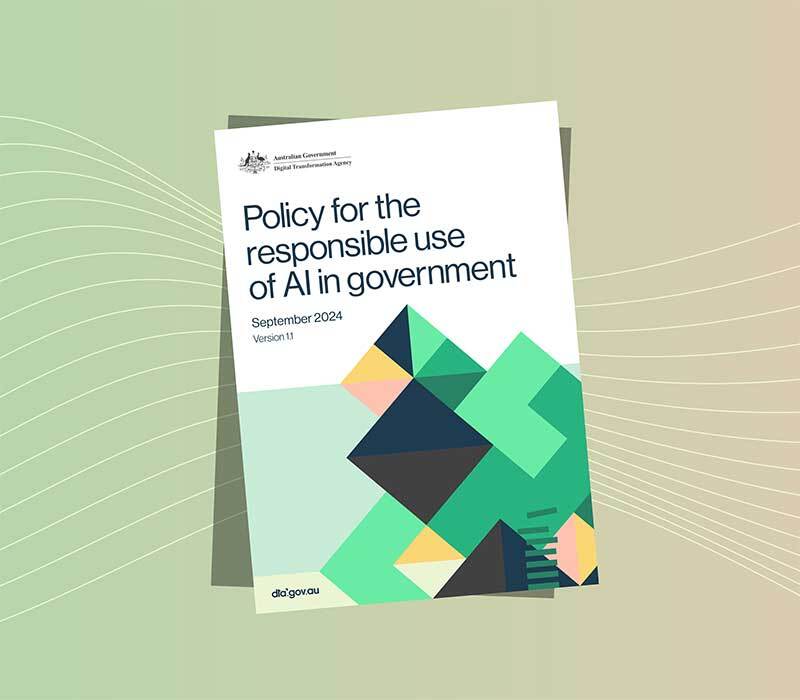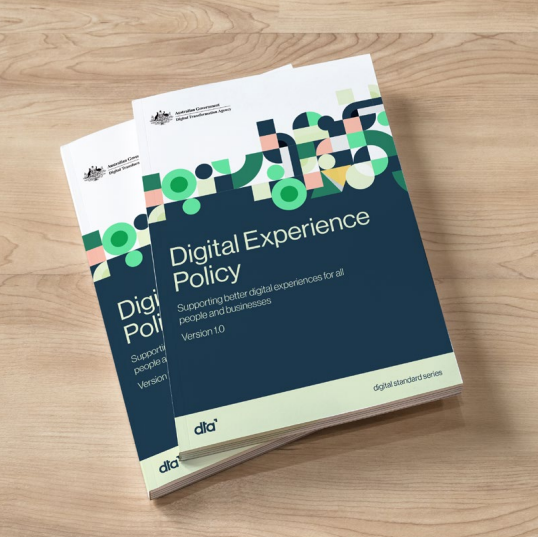-
External resources
To support the Australian Government's responsible use of AI, agencies and their staff are encouraged to familiarise with and make use of the below resources.
-
Register for updates
Sign up to the DTA's newsletter to receive updates on all things AI in government.
-
This risk matrix was developed to help agencies identify new, high-risk use cases under the responsibilities of accountable officials. The policy does not prescribe risks that agencies should be assessing or the system used to determine the final risk outcomes.
-
This risk matrix was developed to help agencies identify new, high-risk use cases and support accountable officials to fulfil their policy responsibilities.
The policy does not prescribe risks that agencies should be assessing or the system used to determine the final risk outcomes.
-
Resources for AI in government
-
This policy aims to ensure that government plays a leadership role in embracing AI for the benefit of Australians while ensuring its safe, ethical and responsible use, in line with community expectations.
-
Your responsibilities
Agencies must designate accountability for implementing the policy to accountable official(s) (AOs), who must:
- be accountable for implementation of the policy within their agencies
- notify the Digital Transformation Agency (DTA) where the agency has identified a new high-risk use case by emailing ai@dta.gov.au
- be a contact point for whole-of-government AI coordination
- engage in whole-of-government AI forums and processes
- keep up to date with changing requirements as they evolve over time.
The policy does not make AOs responsible for the agency’s AI use cases however an agency may decide to apply additional responsibilities to their chosen AOs.
-
Guidance for staff training on AI
Guidance for providing staff with training on AI is available at the link below.
-

Policy for the responsible use of AI in government
A framework to position the Australian Government as an exemplar for safe and responsible use of artificial intelligence.
-
Standard for AI transparency statements
Version 1.1
Use the following information to support your agency’s implementation of the policy for responsible use of AI in government.
-
Your responsibilities
Under the policy, agencies must make publicly available a statement outlining their approach to AI adoption as directed by the Digital Transformation Agency (DTA).
This standard provides the DTA’s direction which agencies must follow. It establishes a consistent format and expectation for AI transparency statements in the Australian Government. Clear and consistent transparency statements build public trust and make it easier to understand and compare how government agencies adopt AI.
Agencies must provide the following information regarding their use of AI in their transparency statement:
- the intentions behind why the agency uses AI or is considering its adoption
- classification of AI use according to usage patterns and domains
- classification of use where the public may directly interact with, or be significantly impacted by, AI without a human intermediary or intervention
- measures to monitor the effectiveness of deployed AI systems, such as governance or processes
- compliance with applicable legislation and regulation
- efforts to identify and protect the public against negative impacts
- compliance with each requirement under the Policy for responsible use of AI in government
- when the statement was most recently updated.
Statements must use clear, plain language that is consistent with the Australian Government Style Manual and avoid technical jargon. They must also provide or direct to a public contact email for further enquiries.
Agencies must publish transparency statements on their public facing website. It’s recommended that a link to the statement is placed in a global menu, aligned to the approach often taken for privacy policies.
Transparency statements must be reviewed and updated at these junctures:
- at least once a year
- when making a significant change to the agency’s approach to AI
- when any new factor materially impacts the existing statement’s accuracy.
-
How to apply
Implementing the AI transparency statements
The policy provides a coordinated approach for the use of AI across the Australian Government. It builds public trust by supporting the Australian Public Service (APS) to engage with AI in a responsible way.
Transparency is critical to building public trust and is an important aim of the policy and broader APS Reform agenda. The public should have confidence that agencies monitor the effectiveness of deployed AI systems and have measures to protect against negative impacts.
AI transparency statements help agencies to meet these aims by providing a foundational level of transparency on their use of AI. They publicly disclose:
- how AI is used and managed by the agency
- a commitment to safe and responsible use
- compliance with the policy.
Agency responses to the required information are intended to provide a high-level overview of agency AI use and management in line with the policy intent.
Agencies are encouraged to stocktake individual use cases to determine their classification of AI use. They are not required to list individual use cases or provide use case level detail. However, agencies may choose to provide detail beyond the requirements to publicly explain their approach to AI.
The agency’s accountable officials should provide the DTA with a link to the statement when it is published or updated by emailing ai@dta.gov.au
-
Identifying in- and out-of-scope AI systems
For agencies to determine the scope of their transparency statements, the policy applies the Organisation for Economic Co-operation and Development (OECD) definition of AI:
An AI system is a machine-based system that, for explicit or implicit objectives, infers, from the input it receives, how to generate outputs such as predictions, content, recommendations, or decisions that can influence physical or virtual environments. Different AI systems vary in their levels of autonomy and adaptiveness after deployment.
-
Questions about implementation
Accountable officials can contact the DTA with questions about implementing the transparency statements by emailing ai@dta.gov.au.
-
1. Executive Summary
In 2019, the Australian Public Services’ (APS) Secretaries Board agreed to prototype a whole-of-government Enterprise Resource Planning (ERP) template, with the Department of Finance (Finance) leading prototype development. In 2021–22, the project moved to Services Australia. Services Australia was tasked with building and delivering a common corporate technology platform (GovERP) for use by APS entities.
On 28 November 2023, the Finance Minister announced a new ERP approach for the APS that includes GovERP being repurposed for use by Services Australia (as Services Australia ERP), and any entities that choose to use it (see A new approach for back-office functions in the Australian Public Service). The Minister also announced an independent reuse assessment of GovERP to support Commonwealth entities to implement future cost effective ERP uplifts. This report outlines the outcomes of the independent Reuse Assessment.
1.1 Summary of recommendations
This Reuse Assessment has made 5 key observations relating to GovERP’s delivery to date, remaining work to complete, reusability and alternate designs or delivery pathways. These are summarised below.
Insights suggest that for the government’s investment in GovERP to date:
- GovERP’s functional capabilities cannot be reused by entities as they currently stand. It should be noted that for larger entities with complex ERP requirements and substantial in-house functional and technical digital skills, building on existing GovERP capabilities may be desirable to help minimise the effort and financial investment required to develop or update their ERP capabilities
- system integration or user acceptance testing has not yet occurred for any of the functional capabilities identified, and
- a significant number of business process maps, designs, patterns, and related documentation have been identified that, if made available to other entities, could act as an accelerator for future ERP uplifts.
Against these key observations, the Reuse Assessment has made 5 recommendations for next steps.
-
Key observation #1
The shifts in GovERP’s scope, changes in ownership, and limited stakeholder consistency (as evidenced by multiple changes to the entities identified for initial onboarding) have culminated in a program that has not delivered as originally intended. The volatility, and ambiguity in ownership and accountability, has resulted in an under-delivering project. The need for well-functioning ERP capabilities across government has not abated.
Recommendation
a) As core underpinning capability of all government entities, ERP uplifts need clear ownership and accountability mechanisms established at both the COO Committee and Secretaries Data and Digital Committee (SDDC) levels, to ensure considered uplift sequencing and to promote common approaches with limited customisations.
b) To ensure equitable access to market resources across entities, overarching SDDC governance is needed to support successful ERP uplifts and implementation across government.
Report reference
Off -
Key observation #2
GovERP has not achieved the aim of a standardised common transactional corporate service across the APS. 30 functional GovERP capabilities have been developed to date with 18 of these having completed functional testing, but none have progressed beyond functional testing into system integration testing, user acceptance testing or production.
The ERP solution in its current form is not suitable to meet whole-of-government or Services Australia’s operational requirements. The objective of a standardised, common transactional corporate service will not be achieved by GovERP, even if the remaining work to complete the MVP1.1 is progressed.
Recommendation
Given the objective of a standardised, common transactional corporate service will not be achieved by GovERP, further direct investment in GovERP for whole-of-government use is not recommended.
Report reference
Off -
No results found.
-
Key observation #3
Considering the current state of ERP capabilities, Tier 1 reuse opportunities (use of what has already been built) are limited.
Building on existing GovERP capabilities with a separate ERP instance (a Tier 2 reuse opportunity) may be desirable for larger entities with complex ERP requirements and substantial in-house functional and technical digital skills. In such a case, GovERP could serve as a potential accelerator as it can help minimise the effort and financial investment required to develop capabilities based on the current build and test status.
Recommendation
Any entity intending to progress ERP upgrades must have a robust business case for investment. The government needs to enforce, via policy, a strong incentive to ensure entities actively consider reuse of existing capabilities, as well as leveraging current arrangements with commercial vendors for licences and hosting costs where applicable.
Report reference
Off
Connect with the digital community
Share, build or learn digital experience and skills with training and events, and collaborate with peers across government.


